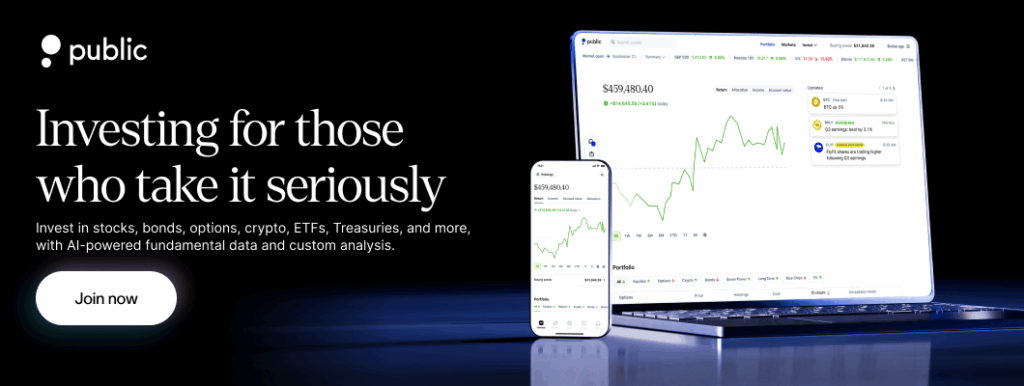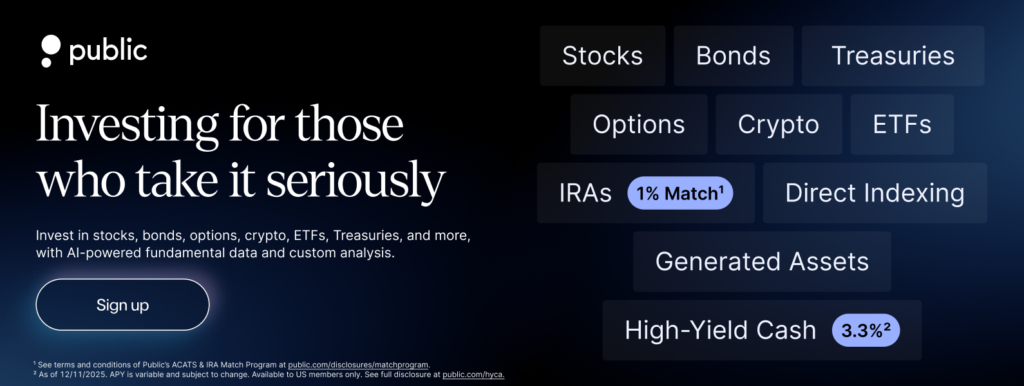Investing in the stock market has been one of the most effective ways to grow wealth. However, understanding the concept of average stock market returns is crucial for setting realistic expectations and planning your investments effectively. This guide breaks down historical returns, factors influencing performance, and what you need to consider as an investor and beyond.
Average stock market returns: Why does it matter for your investments?

Table of Contents
What is an average stock market return?
The average stock market return typically refers to the historical annualized return of major stock indices, such as the S&P 500, Dow Jones Industrial Average (DJIA), and Nasdaq Composite. Over the past century, the U.S. stock market has averaged an annual return of around 10% before inflation and about 7% after adjusting for inflation.
However, it is important to note that annual returns can vary significantly. Some years may bring double-digit gains, while others may experience significant losses, making long-term investment strategies more reliable than short-term speculation.
The stock market is highly volatile—some periods show an upward trend, while others experience downturns. Returns can be measured over any time frame, but most investors focus on average annual returns, which indicate the standard return over a given year.
Historically, the average annual return of the stock market has hovered around 10% over the past century. However, this does not mean that every year will yield a 10% return—some years may see much higher returns, while others may experience negative growth. Long-term investing can help smooth out these fluctuations.
Here’s a look at historical average annual returns of the S&P 500 for different periods, updated as of January 2025:
| Peroid | Average annual returns |
| 1-Year (2024) | 15.2% |
| 3-Year (2022-2024) | 27.4% |
| 5-Year (2019-2024) | 77.1% |
| 10-Year (2014-2024) | 215.6% |
-
Note: The above figures represent the cumulative returns over the respective periods. These returns demonstrate that while short-term fluctuations are common, long-term investments in the S&P 500 have historically shown substantial growth.
- Dow jones industrial average (DJIA): The DJIA, which consists of 30 large blue-chip companies, has averaged around 8-10% annually over the long run. While it includes fewer stocks than the S&P 500, it remains a key indicator of market performance.
- Nasdaq composite: Composed mainly of technology and growth stocks, the Nasdaq Composite has historically been more volatile but also delivered higher returns, averaging 10-12% annually. However, major downturns—such as the dot-com bubble of 2000—led to significant losses before eventual recoveries.

Measuring stock market returns
Stock market returns are a key metric for evaluating investment performance. They help investors assess how their investments have grown over time and compare different asset classes.
1. Total return vs. price return
- Price return: Measures only the change in stock price, ignoring dividends.
- Total return: Includes price appreciation and reinvested dividends, offering a more accurate picture of an investment’s growth.
2. Annualized return (CAGR)
The Compound Annual Growth Rate (CAGR) smooths out returns over multiple years
CAGR = (Beginning Value – Ending Value) ^ 1 / n – 1
where n is the number of years.
3. Nominal vs. Real return
- Nominal return: The raw percentage gain before adjusting for inflation.
- Real return: Adjusted for inflation to reflect actual purchasing power.
4. Risk-adjusted return metrics
To compare investments fairly, risk must be considered:
- Sharpe ratio: Measures return per unit of risk.
- Sortino ratio: Focuses on downside volatility.
- Treynor ratio: Evaluates return per unit of market risk (beta).
5. Benchmark comparisons
Investors measure performance against indexes like the S&P 500, Dow Jones, or Nasdaq Composite to understand relative returns.

Market downturns and recoveries
Market downturns happen approximately once a decade, yet investors who remained invested often saw positive returns over time. Here are key market crashes and their eventual recoveries:
- 2000 Dot-Com Crash: Nasdaq lost 79%, but by 2025, it had recovered to over 16,000 points.
- 2008 Great Recession: S&P 500 lost over 50% but has since grown over 500%.
- 2020 COVID-19 Crash: Markets lost over 30% in weeks but rebounded quickly.
- 2022-2023 Bear Market: The S&P 500 dropped over 20% due to inflation and interest rate hikes but recovered by late 2024.
Factors influencing stock market returns
Several factors affect stock market performance and, consequently, the average returns investors can expect:
1. Economic growth
A strong economy supports business profitability, leading to higher stock prices. Key indicators like GDP growth, employment rates, and consumer spending can influence stock returns.
2. Inflation
Stock market returns should be adjusted for inflation, which erodes purchasing power. The real return (adjusted for inflation) is often lower than the nominal return.
For example:
- The 30-year return for the S&P 500 is 10.4% annually.
- After adjusting for inflation, the real return is ~7.5%.
3. Market Timing
Attempting to time the market is risky. Investors who buy high and sell low underperform compared to those who use long-term investing strategies like DCA or buy-and-hold.
4. Risk Tolerance
The risk tolerance of your portfolio will affect your return rate. Higher risk portfolios experience greater fluctuations in value, while lower risk portfolios may experience less market volatility. Investors who take on more risk should experience higher returns over time, though this is far from guaranteed.
5. Asset Allocation
The allocations of assets in your portfolio will affect its overall return rate. Some assets are inherently riskier than others, meaning that they can expect to experience higher returns as well as higher losses. Risky stocks, for example, have a higher risk level than bonds.
6. Corporate Earnings and Dividends
Stock prices are influenced by corporate profitability. Companies with strong earnings and consistent dividend payouts tend to provide stable, long-term returns.
7. Geopolitical and Global Events
Wars, pandemics, trade wars, and political uncertainty can impact market stability and affect average returns.

How to benefit from average market returns?
Even though the market’s annual returns vary, investors can still maximize their gains using the following strategies:
1. Long-term investing
Staying invested for 10+ years increases the likelihood of achieving the average 7-10% return. Historically, the market rewards patience.
2. Diversification
Investing in a mix of stocks, bonds, ETFs, and real estate helps reduce risk while still capturing market returns.
3. Dollar-cost averaging (DCA)
Investing a fixed amount at regular intervals helps smooth out market volatility and prevents emotional decision-making.
4. Reinvesting dividends
Reinvesting dividends allows for compounding growth, increasing your long-term returns.
5. Avoiding market timing
Trying to predict market highs and lows often leads to missed gains. Staying invested is usually more profitable than attempting to time the market.
Predicting future returns
The stock market remains unpredictable, but historical trends suggest that long-term investing may continue to be profitable.
Common Investment Strategies
- Long-term portfolio investing: Investors favoring a 3+ year horizon may prefer index funds and ETFs.
- Sector rotation: With AI, renewable energy, and digital assets leading, some investors explore high-growth sectors.
- Dividend stocks: Stocks with consistent dividends provide passive income and stability.
- Dollar-cost averaging (DCA): This strategy is gaining popularity as it mitigates short-term market risks.

Conclusion
Stock market returns fluctuate, but historical data shows that long-term investing has rewarded patient investors. While past performance is not a guarantee of future results, strategies like buy-and-hold and dollar-cost averaging can help you navigate market uncertainties.
For those looking to track and optimize their investments, platforms like Public.com offer tools to help investors manage long-term portfolios and stay engaged with the market.
Public offers an all-in-one brokerage platform to simplify your investing journey where you can build a multi-asset portfolio, including stocks, crypto, options, bonds, and IRA. Tools like the Income Hub help you track earnings and forecast income, while Alpha, an AI-powered assistant, provides real-time market insights to guide your decisions.

Frequently asked questions
What is a good stock market return?
A good stock market return is a positive return on your investment that beats inflation. Each investor will have their own definition for what qualifies as a good return.
How do you measure stock market returns?
Stock market returns are usually measured using annual results for the S&P 500. For a 10-year return rate, you’d add up the annual returns for the S&P 500 over the past 10 years and then divide by 10 to get the average return rate.
What is the average stock market return over 30 years?
The S&P 500 has seen an annualized average return of around 10% annually over the past 30 years.
What is the average stock market return over 10 years?
While the S&P 500 has averaged around 10% since inception, over the past 10 years the market has seen an average return of closer to 15% (between September 18, 2012 and September 18, 2022).